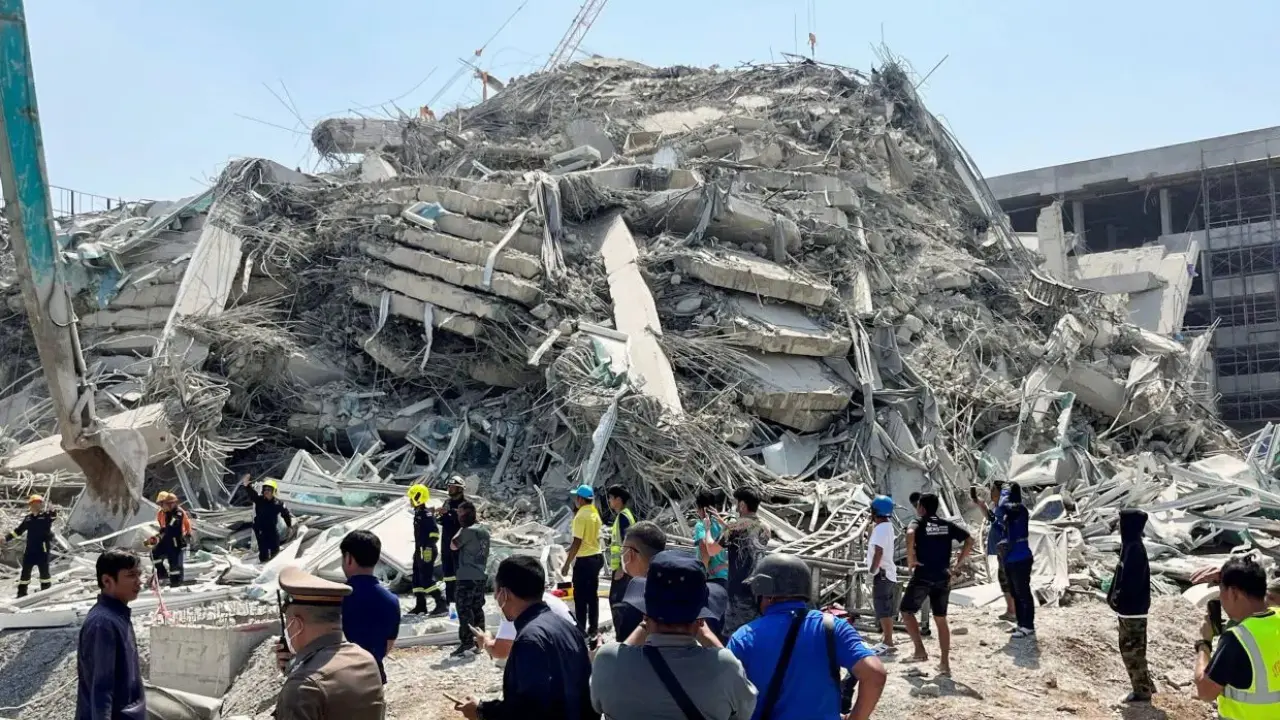A 7.7 magnitude earthquake struck central Myanmar on Friday, March 28, 2025, leaving a path of destruction and death in its wake. The shaking was as far away as Thailand, China, and parts of India. Obviously creating panic and destruction in the region.
Epicenter and Immediate Effects
The quake’s epicenter was located near Mandalay, Myanmar’s second largest city. The earthquake caused roads to buckle in the capital Naypyidaw and several buildings to collapse in Mandalay.
In Bangkok, Thailand, a 30–story building understudy construction collapsed. Unfortunately, resulting in several deaths and dozens trapped under the rubble.
Casualties and Damage
In Myanmar, at least 56 people have been confirmed dead, with hundreds purportedly injured. The regions Bago, Mandalay, Shan, Naypyidaw, and Sagaing reported significant casualties and structural damage.
As a matter of fact, historic sites were also detrimentally affected, with the ancient palace in Mandalay being severely damaged. Hospitals in affected regions are inundated with the injured and are in desperate need of blood donations.
In Thailand, injuries and deaths were reported due to a high-rise building collapsing in Bangkok, with at least three deaths. Rvidently, including two of the construction workers, with about 90 others not accounted for.
The disaster has led to a disaster area in Bangkok as rescue operations are under way, working to rescue survivors.
Regional Tremors and Response
Conclusively, the aftermath of the earthquake has spread into other areas, outside of Myanmar and Thailand. Yunnan and Sichuan provinces in China also experienced tremors. Clearly, it caused evacuations and injuries were reported.
There were mild tremors as far away as the National Capital Region (NCR) of India. Additionally, emergency response teams were placed on standby by authorities as a precaution.
Government and International Response
As a result, Myanmar has declared a state of emergency in six regions. Perhaps, for the first time it has called for international assistance, which Burma has traditionally discouraged. The European Union and France are willing to help.
Additionally, India has indicated its willingness to assist. Subsequently, Prime Minister Narendra Modi saying that the nation stands ready to help as much as possible to the affected.
Rescue Efforts
Rescue operations are underway in Myanmar and Thailand. Emergency workers in Bangkok are hastily trying to locate individuals trapped in the rubble of the building that collapsed.
Evidently, they were are surrounded by many challenges—unstable rubble, downed power poles, and aftershocks. Local authorities are asking residents to stay away from damaged buildings and to follow safe practices.
Historical Significance
This earthquake is the strongest in Myanmar, going back over 100 years to 1912, demonstrating Myanmar’s tectonic and seismic fragility. The destruction of historic sites and essential infrastructure makes it clear.
Supposedly, building codes must be flood-proof, earthquake-proof, and resistant to any other natural disasters that might occur in any area prone to it. The 7.7 magnitude earthquake in Myanmar and Thailand has destroyed life.
Henceforth, a property in a similar fashion to events taking place over a century ago. In addition to starting rescue operations and studying the damage. Communities affected by the earthquakes have to contend with the effects of the earthquake in the immediate political development context.
The will and expertise of the affected peoples will need to be mobilized to help rebuild and recover. Meanwhile also finding ways to end the political violence in the communities healing from that. Especially to extend our help but not interfere in what is the legal and legitimate outcome of a naturally organized society.


